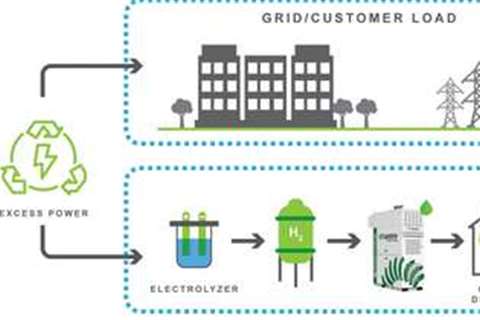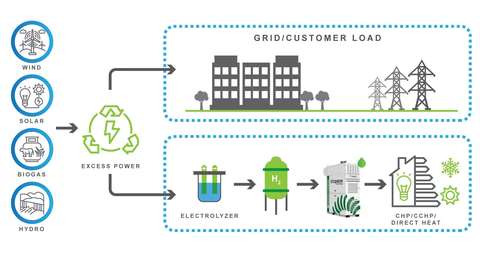
Hydrogen tests show promise, Capstone says
29 March 2022
Hydrogen tests show promise, Capstone says
Slight increases in emissions observed
Capstone Green Energy said test results show its microturbine-based systems can safely perform on 30% hydrogen without hardware or safety modifications.
The tests were done in partnership with the U.S. Department of Energy (DOE) – Argonne National Laboratory and the University of California, Irvine (UCI), the company said.
According to Capstone, the long-term, promising method for producing hydrogen is electrolysis, the process by which hydrogen is split out of water. Electrolysis is one of several approaches to Green Hydrogen that is power generated from carbon-free energy resources such as wind, solar and water. Green hydrogen-fueled microturbines are perfect for complementing the intermittent nature of wind and solar power, making them an ideal component of the modern clean and green microgrid. Further, when wind and solar energy production exceeds demand, excess energy can be used in the production of storable renewable hydrogen energy.
 (Image: Capstone Green Energy)
(Image: Capstone Green Energy)
“We have continued to push the limits of our technology in preparation for global acceleration toward a hydrogen economy,” said Don Ayers, vice president of Technology. “There is a broad international initiative to decarbonize electricity generation through blending of natural gas with hydrogen in existing pipelines. These tests performed at Argonne and UCI show that our existing fleet of fielded power generation units, unmodified, can handle any of the blends currently being discussed for pipeline injection around the world.”
The recent U.S. Government Infrastructure Bill has nearly US$10 billion allocated to hydrogen-related areas, which includes US$8 billion for Regional Clean Hydrogen Hubs, US$1 billion for a Clean Hydrogen Electrolysis Program, and US$500 million for Clean Hydrogen Manufacturing and Recycling Initiatives. The U.S. DOE has already begun to move ahead with planning as it relates to the Hubs.
“We have systematically tested the current commercial C65 and C200 engines, as designed for operation on natural gas, regarding their tolerance to hydrogen/natural gas blends,” said Dr. Vince McDonell of the University of California, Irvine. “The results indicate no deleterious effects when operating either turbine on up to 30% hydrogen by volume, including only slight increases in emissions, but well within current design specifications. The results also indicate a direction for attaining further NOx reductions when burning 100% hydrogen by exploiting the inherent flame stability of hydrogen.”
In addition to testing on 30% hydrogen, Argonne Laboratory has also been running a Capstone C65 microturbine on 100% hydrogen, utilizing Capstone’s patented High Flame Speed injector design. The company said results have been very positive, with high combustion stability, demonstrated injector integrity, and elimination of carbon emissions. Looking forward, Capstone’s research and development activities will transition this design and controls to the C200, fine-tuning for optimum performance and emissions, and in support of pilot hydrogen installations.
“The recent experiments at Argonne with pure hydrogen in a Capstone microturbine-based system showcases technology operability and readiness,” said Muni Biruduganti, Principal Research Engineer at Argonne National Labs. “We tested the new Capstone High Flame Speed Injectors during transient and start-stop operations. Hydrogen-fueled microturbines are one step closer to global prime-time use.”



